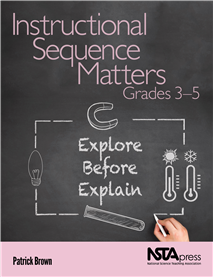All Teaching Strategies resources
NSTA Press Book
Instructional Sequence Matters, Grades 3–5: Explore Before Explain
Instructional Sequence Matters, Grades 3–5 is a one-stop resource that will inspire you to reimagine how you teach science in elementary school. The book discusses two popular approaches for structuring your lessons: POE (Predict, Observe, and Expl...
By Patrick Brown
Journal Article
How Can We Motivate Our Science Students?
Notes from the field editor ...
By Ann Haley Mackenzie
Journal Article
What STEM Mindset Is … and Why Everyone Should Have One
A STEM (science, technology, engineering, and math) mindset encompasses many things, and perhaps does not mean the same thing to every person. Many believe, however, that it combines general attributes that are independent of an individual’s acad...
By Beth Murphy
NSTA Press Book
It's Still Debatable! Using Socioscientific Issues to Develop Scientific Literacy, K–5
It’s Still Debatable! encourages scientific literacy by showing you how to teach the content and thinking skills K–5 students need to explore real-world questions like these: • Is football too dangerous for kids? • Do we need zoos? �...
By Sami Kahn
eBook
Instructional Sequence Matters, Grades 3–5: Explore Before Explain (e-book)
Instructional Sequence Matters, Grades 3–5 is a one-stop resource that will inspire you to reimagine how you teach science in elementary school. The book discusses two popular approaches for structuring your lessons: POE (Predict, Observe, and Expl...
NSTA Press Book
Making Sense of Science and Religion: Strategies for the Classroom and Beyond
The authors of Making Sense of Science and Religion believe that addressing interactions between science and religion is part of all science educators’ collective job—and that this is the book that will help you facilitate discussion when the top...
By Joseph W. Shane, Lee Meadows, Ronald S. Hermann, Ian C. Binns






